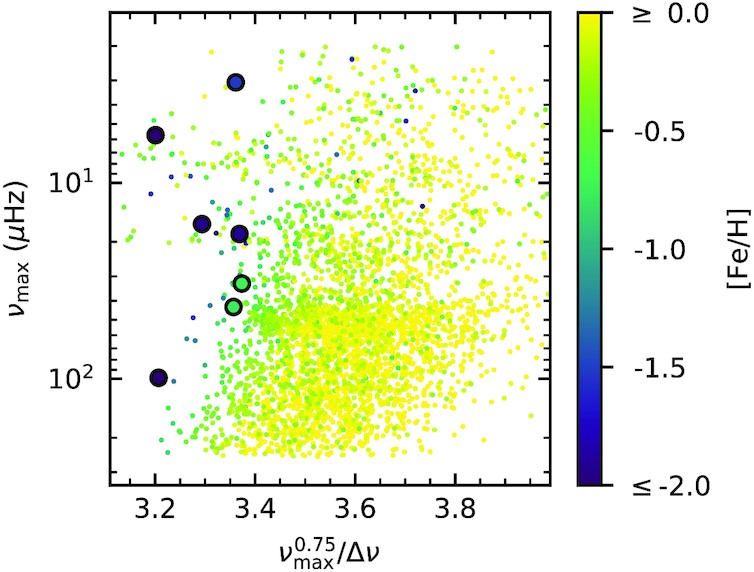This month’s media comes from PhD student Arthur Alencastro Puls from our ANU node. Arthur and his colleagues have published a paper on Galactic Archaeology. Unlike regular archaeologists who can dig up ancient human artefacts that sometimes include a written history of the people, galactic archaeologists rely on a different kind of fossilised information that is conserved by old stars. By retrieving the pieces of this celestial puzzle, it might be possible to assemble the history of our Galaxy: how it was formed, and how it has been evolving.
An important piece of information held by our stellar fossils is the chemical composition of their atmosphere, which remains largely unchanged through most of a star’s life. Apart from a few exceptions, the atmospheric composition of the star may be interpreted as a picture of the environment in which it has formed, both in space and time.
Stars act like fusion plants, combining lighter elements into heavier ones. Thus, it is expected that the heavier elements (“metals”, as astronomers call any elements heavier than hydrogen and helium) will accumulate in the Universe through cosmic time as stars introduce more metals into the environment around them. Therefore, younger generations of stars that formed more recently will be more metal-rich, while older stars are expected to be metal-poor. This has been observed, but there are some weirdos around.

The stars in this plot are “RGB” stars, meaning low- and intermediate-mass stars (those that don’t explode as supernovae) in the evolutionary stage when the main source of energy comes from a H-burning shell around an inert He core. It is a particular evolutionary stage of red giants, that happens before the star begins to burn the He in its core into C. The x-axis corresponds, roughly, to mass. Stellar mass tends to increase from left to right for RGB stars in the same y-position. The y-axis (nu-max) corresponds to the evolutionary stage of the red giant star. Nu-max decreases as the star puffs up, causing it to get brighter and cooler. Colour is metallicity — several of Arthur’s targets (the big circles) are too purple when compared to the points around them. What makes it difficult to clearly interpret is that (1) there are very few metal-poor stars in the previous studies Arthur is comparing to and (2) the relationship isn’t exactly linear.
Arthur and his colleagues analysed a few red giant stars that were previously identified as “weirdos” in this sense, otherwise known as outliers. Using asteroseismology (the study of stellar pulsations), the team confirmed what the previous studies had found: the stars are younger than expected based on their metal content.
Red giant stars present very mild pulsations that can be detected as tiny variations in their brightness. In the same manner that a musical instrument can be identified by the sound it emits, the frequencies in which these red giants pulsate can help us understand their interior and some of their fundamental characteristics.
One of these fundamental parameters is stellar mass, which in the case of red giants is linked to stellar age: red giants are stars roughly at the end of their lives, and the amount of time they take to enter that stage depends on the original mass of the star. That is, knowing the mass of a red giant with a good precision allows us to have a good estimation of its age.
After confirming their deficiency in metals (as much as 100 times less than our Sun) almost all of the stars remained stubbornly younger than expected, even when using the most up-to-date data and state-of-the-art methods to estimate masses and ages.
Further analysis of their orbits using data from the Gaia mission demonstrated that at least a few of these outliers may not have formed in the Milky Way Galaxy. They could be members of dwarf galaxies that were absorbed by the Milky Way in the past, potentially being galactic immigrants born in galaxies with very different histories from the Milky Way.
Leave A Comment